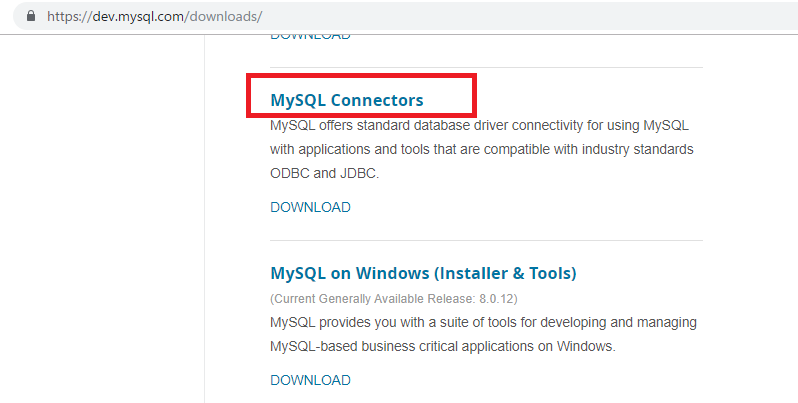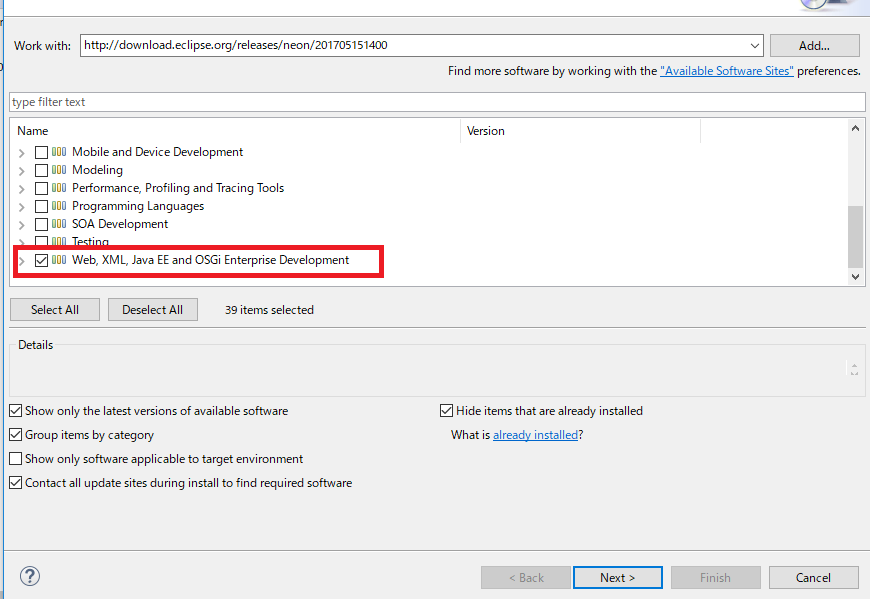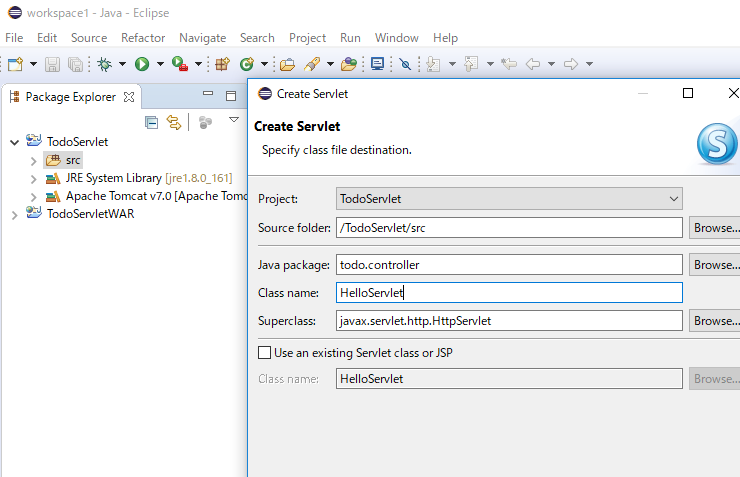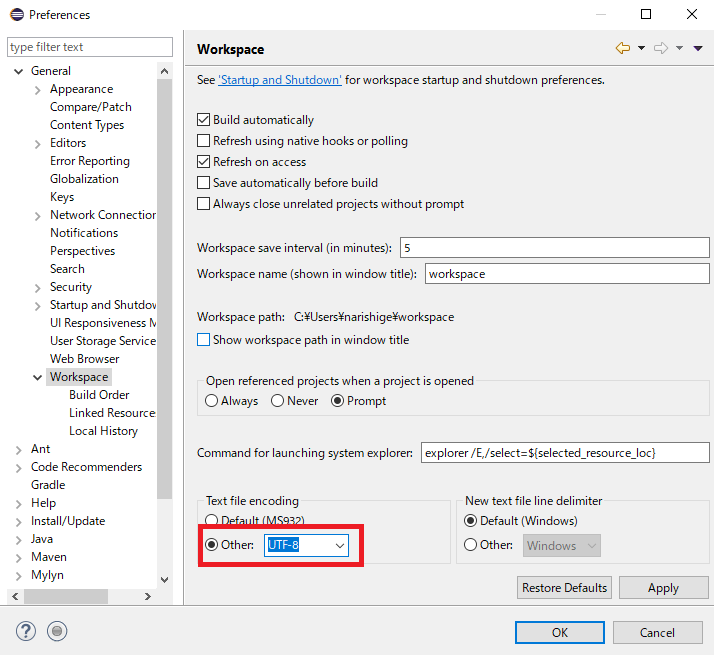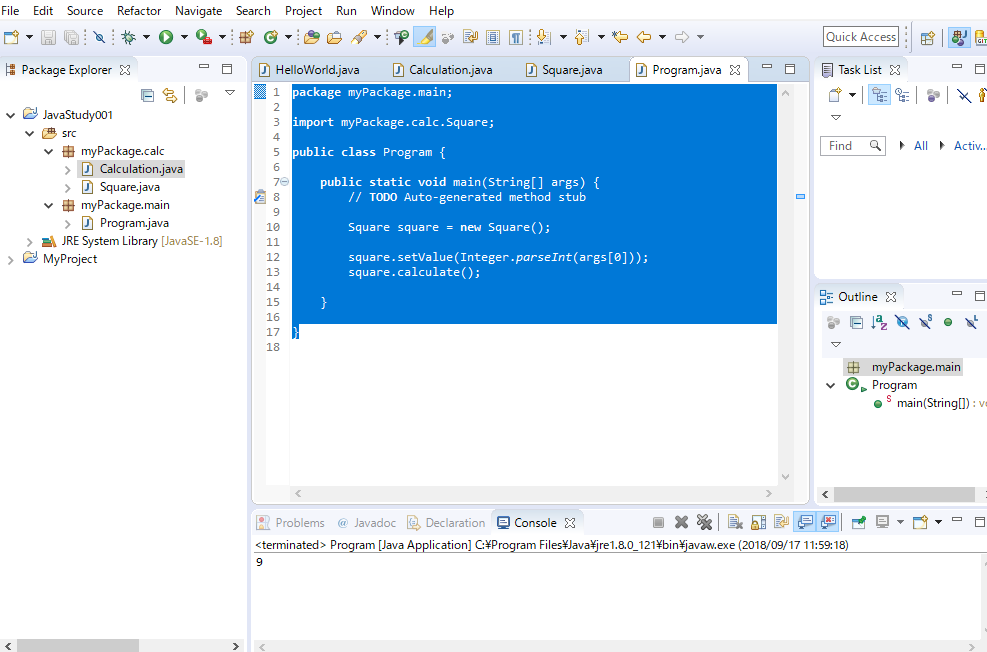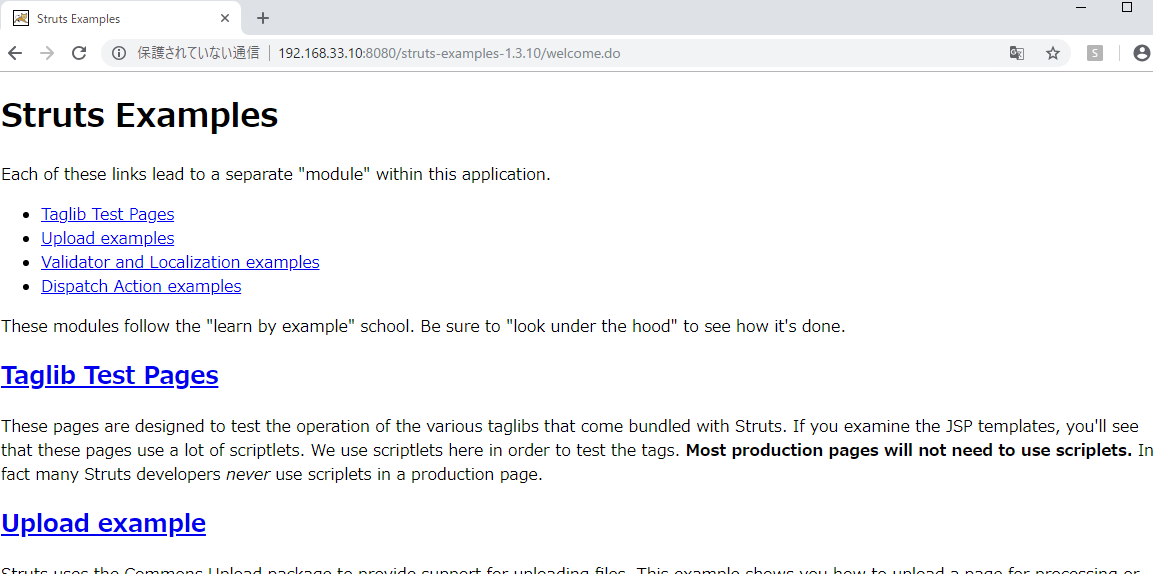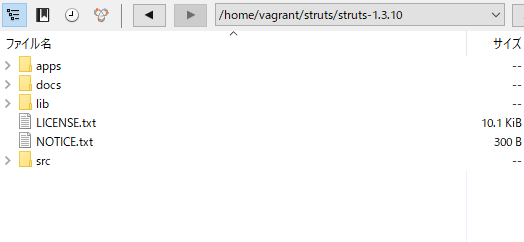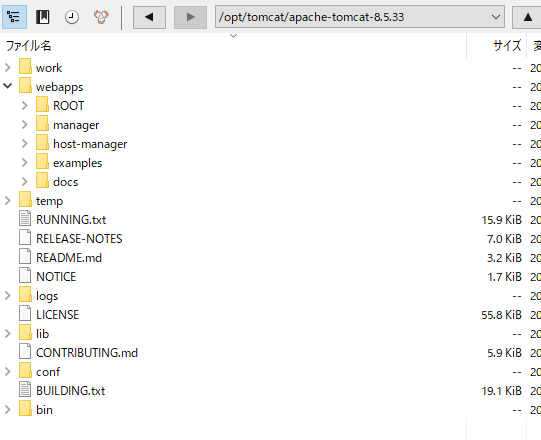Java 製のWebアプリで利用されるクラスファイル(servlet)、設定ファイル、JSPやHTMLファイル、JAR形式のライブラリなどがまとめられているアーカイブ。 また、web.xmlが含まれ、TomcatなどのアプリケーションサーバにWARファイルを配布すると、これを元にデプロイされる。
warファイルはzip形式で圧縮されたアーカイブにすぎません。しかし、ほかの形式とは異なり、warファイルを規定のアプリケーションフォルダ(Tomcatなら、%CATALINA_HOME%\webapps)にコピーしておくと、コンテナの(再)起動時に自動的に展開され、Webブラウザからアクセス可能になる
jarコマンドにcvfオプションを付加して、そのパス名を引数として渡すだけで作成できる。
なるほど、動くことは分かったので、strutsがどういう仕組みで、どういう風に書いていけばいいのかですな。
課題としては
– ファイル構成がわからない
– jar, war, jsp, javaなど使用するファイルが、phpやpython、rbなど他のスクリプト言語に較べて多い
—
「Maven」とは、要するにJavaプログラムをビルドするためのツールです。
C言語を触ったことがある人は、makeのようなものと言えばイメージがしやすいかと思います。
似たようなツールに、AntやGradleなどありますが、使い方とかが違うだけで、本質的には同じです。
コンパイルの前後に依存するライブラリを自動で揃えたり、XMLさえ書けば、いろんなことがビルドと一緒にできるツール
JSPとは、JavaServer Pages の略で、Javaによるサーバサイド・スクリプティングを実現するためのテクノロジです。 … JavaScriptは、Webサーバから転送されるHTMLファイルの中に記述されており、その実行は、クライアントであるWebブラウザ上で行われる。
Webサーバ(ホームページのファイルを置くサーバ)上でお仕事をするJavaのプログラムで、HTMLファイルとJavaのプログラムが合体したもの
jspの例
<html>
<head>
<title>title</title>
</head>
<body>
<%
String word1 = "hello world!";
out.println(world1);
%>
</body>
</html>
View JSP/HTML
Control サーブレット
Model JavaBeans
<table border="1">
<tr><th>タイトル</th><th>著者</th><th>出版社</th><th>価格</th></tr>
<logic:iterator id="data" name="aryData" scope="request">
<tr>
<td><bean:write name="data" property="title"></td>
<td><bean:write name="data" property="author"></td>
<td><bean:write name="data" property="publish"></td>
<td><bean:write name="data" property="price"></td>
</tr>
</logic:iterator>
</table>

